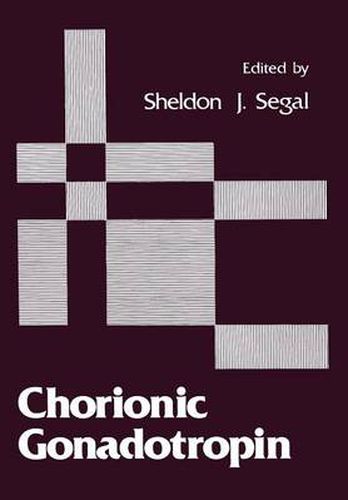Readings Newsletter
Become a Readings Member to make your shopping experience even easier.
Sign in or sign up for free!
You’re not far away from qualifying for FREE standard shipping within Australia
You’ve qualified for FREE standard shipping within Australia
The cart is loading…






This title is printed to order. This book may have been self-published. If so, we cannot guarantee the quality of the content. In the main most books will have gone through the editing process however some may not. We therefore suggest that you be aware of this before ordering this book. If in doubt check either the author or publisher’s details as we are unable to accept any returns unless they are faulty. Please contact us if you have any questions.
This volume is devoted to the chemistry, immunology, molecular biology, and physiology of the human chorionic gonadotropin, heG. For this glycoprotein molecule the course from discovery to chemical deciphering covered about fifty years. It was in 1928 that Ascheim and Zondek reported that urine from pregnant women contains something that stimulates the ovaries of mice or rats. This provided the basis for the famous A-Z test for pregnancy and for the rabbit test modification introduced by Friedman. As researchers sought to find more sensitive responses to heG, they used a wide variety of species including the South African aquatic toad, Xenopus Zaevis, the terrestrial toad of South America, Bufo arinarus, and the African weaver finch, EupZeetes afra. The weaver finch feather reaction was particularly noteworthy, for it disclosed a non-gonadal response to heG/LH. In retrospect, this may have been an important evolutionary clue to the realization that the designation of the hormone as a gonadotropin may have been only partially descriptive of the molecule’s physiological function–a concept that is gaining attention, as the papers in this 1980 volume divulge.
$9.00 standard shipping within Australia
FREE standard shipping within Australia for orders over $100.00
Express & International shipping calculated at checkout
This title is printed to order. This book may have been self-published. If so, we cannot guarantee the quality of the content. In the main most books will have gone through the editing process however some may not. We therefore suggest that you be aware of this before ordering this book. If in doubt check either the author or publisher’s details as we are unable to accept any returns unless they are faulty. Please contact us if you have any questions.
This volume is devoted to the chemistry, immunology, molecular biology, and physiology of the human chorionic gonadotropin, heG. For this glycoprotein molecule the course from discovery to chemical deciphering covered about fifty years. It was in 1928 that Ascheim and Zondek reported that urine from pregnant women contains something that stimulates the ovaries of mice or rats. This provided the basis for the famous A-Z test for pregnancy and for the rabbit test modification introduced by Friedman. As researchers sought to find more sensitive responses to heG, they used a wide variety of species including the South African aquatic toad, Xenopus Zaevis, the terrestrial toad of South America, Bufo arinarus, and the African weaver finch, EupZeetes afra. The weaver finch feather reaction was particularly noteworthy, for it disclosed a non-gonadal response to heG/LH. In retrospect, this may have been an important evolutionary clue to the realization that the designation of the hormone as a gonadotropin may have been only partially descriptive of the molecule’s physiological function–a concept that is gaining attention, as the papers in this 1980 volume divulge.